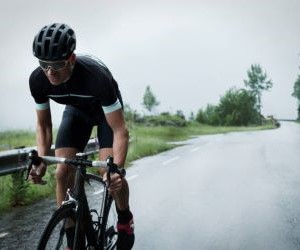Learn how to choose between clipless and flat pedals by comparing efficiency, control, comfort, and riding style to find the right setup for your needs.
HOW DO I BACK-TEST A CYCLING BETTING MODEL ACROSS THE LAST THREE SEASONS?
Back-testing a cycling betting model is essential to evaluate how well your predictions would have performed in the past. By analyzing the last three seasons, you can validate the model's logic, discover hidden weaknesses, and optimize parameters before risking real money. This guide will walk you through every step—data sourcing, cleaning, metric selection, and automation—so you can make better betting decisions based on historical performance, not guesswork.

Collecting and preparing historical data
Why clean, structured data is your foundation
The first step in back-testing your cycling betting model is collecting clean, accurate race data from the past three seasons. Focus on datasets from reputable sources such as ProCyclingStats, UCI official records, and sports betting APIs. You'll need race results, rider stats, team changes, race profiles, and odds history to build a comprehensive dataset.
Once collected, normalize the data structure by aligning fields like date formats, rider names (standardized to a unique ID), and outcome labels (e.g., winner, top 3 finish, DNF). It’s also essential to account for edge cases—canceled races, weather-related anomalies, and riders changing teams mid-season.
Best practices for data cleaning and validation
After standardizing your dataset, validate it with spot checks and correlation tests. Missing values should either be imputed using reasonable estimates or excluded if they bias results. Create a primary key for each event-rider combination and ensure no duplicates exist. Your final dataset should be tabular, consistent, and version-controlled using tools like Git or DVC.
Use ProCyclingStats and UCI databases for reliable event data
Standardize race types (e.g., Grand Tour, one-day, TT)
Normalize odds across sportsbooks to handle variance
Use rider IDs to avoid duplication from name variations
Label outcomes using a consistent schema (e.g., binary win/loss or top-N finish)
Without structured historical data, even the most sophisticated betting model will fail. Treat this step like the foundation of a skyscraper—everything else depends on it.
Designing the test and choosing metrics
Simulating realistic betting conditions
To ensure your back-test is meaningful, simulate real-world conditions as closely as possible. This means modeling bet sizing, bankroll evolution, and time-based betting sequences. Avoid “look-ahead bias” by ensuring that your model only uses information available before each race’s start.
Use a rolling window or walk-forward approach to mimic how your model would evolve season by season. Don’t just assess cumulative profit; also consider volatility and drawdown. These help reveal whether your model produces consistent returns or just occasional wins surrounded by losses.
Evaluating profitability and risk
Key metrics include Return on Investment (ROI), hit rate (win percentage), expected value (EV), and maximum drawdown. Sharpe ratio or Kelly Criterion can be used for assessing risk-adjusted performance. Track both flat staking and variable staking outcomes to understand the model's behavior under different bankroll strategies.
ROI = (Total profit / Total stake) x 100
Hit rate = Winning bets / Total bets
EV = (Probability x Payout) - (1 - Probability)
Drawdown = Peak bankroll - Lowest point thereafter
Sharpe Ratio = Average excess return / Standard deviation
Don’t cherry-pick races or results. Run the full dataset through the model, and compare results to a baseline (e.g., blindly betting favorites) to assess relative edge.
Automating, interpreting, and improving
Bringing it all together with automation
Once your data and testing framework are solid, automate the entire pipeline. Use Python with Pandas for data manipulation, Scikit-learn for modeling, and backtrader or a custom script for back-testing logic. Automation ensures reproducibility, scalability, and faster iteration cycles.
Visualizations using Matplotlib or Seaborn can help uncover trends and outliers. For example, identify periods when the model underperformed and correlate them with changes in team dynamics or weather patterns. Consider versioning every test run with config files to track what changed.
Iterating based on insights
Interpret your results honestly. A profitable model with high variance may not be viable without deep pockets or emotional discipline. Use insights from losing streaks to identify overfitting or poor input assumptions. Fine-tune feature selection, retrain with updated seasons, or add contextual layers like altitude or rider fatigue metrics.
Automate your pipeline to scale experimentation
Use config files for versioning and reproducibility
Visualize results to diagnose variance and drawdowns
Iterate on feature selection and model assumptions
Benchmark against naive strategies for true comparison
The goal isn’t perfection—it’s consistency and a statistical edge. Back-testing across three seasons gives you a reality check before committing real capital. It’s a necessary rite of passage for every serious cycling bettor.
YOU MAY ALSO BE INTERESTED






